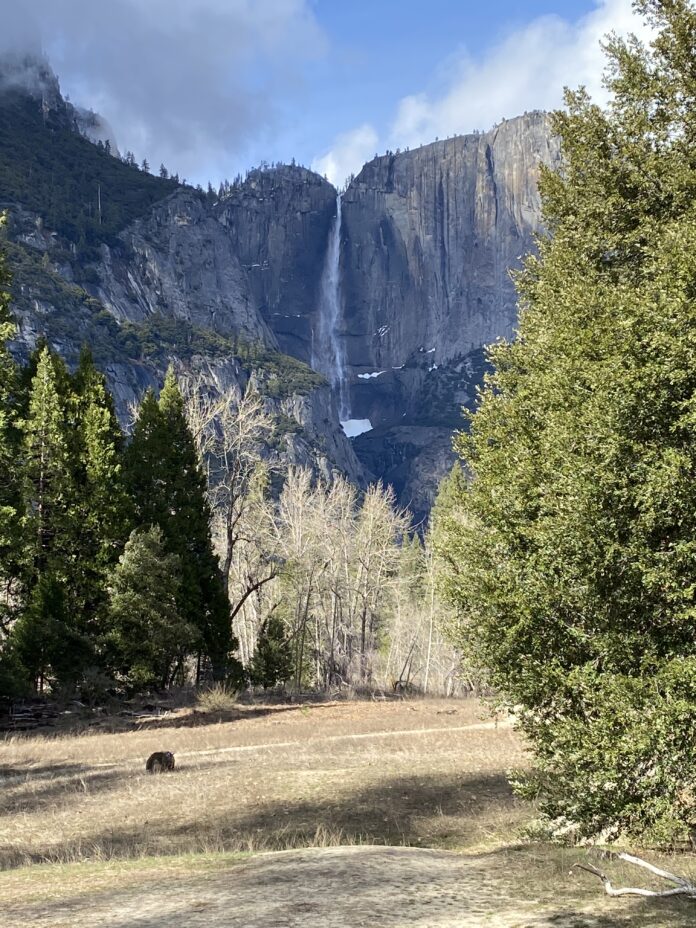RBR+TVBR OBSERVATION
While traveling recently in Central California, the importance of AM radio’s continued accessibility in U.S. vehicles became abundantly clear to RBR+TVBR Editor-in-Chief Adam R Jacobson. Across three days in Yosemite National Park, cell phone reception was difficult. So was tuning to Sirius XM. This provided a fresh perspective on the fight to keep AM radio in every vehicle.
For the last 12 months, one of the biggest NAB policy missions has involved AM Radio. As most RBR+TVBR readers know, proposed legislation would require automobile manufacturers to keep access to kHz-band broadcasts in the dashboard entertainment system. In Congress, support is strong, with 236 co-sponsors of the House of Representatives bill introduced in May 2023 by Rep. Josh Gottheimer (D-N.J.) and companion legislation in the Senate brought forth by Massachusetts Democrat Ed Markey now boasting 47 co-sponsors.
Yet, to some in our circle of friends and acquaintances, ensuring a technology that’s more than a century old can be accessed in a car, truck or van has brought forth puzzled looks. AM Radio… Why?? is a response given by more than one person in our tiny little corner of South Florida, where RBR+TVBR and co-owned publication Radio Ink maintain their headquarters office. It’s perfect understandable for longtime Miami-area residents. In the early 1970s, migration from AM to FM came swift, making South Florida a pioneer with bringing FM out of the living room and into vehicles.
In other parts of the U.S., it is a far different story. In October 2022, an excursion to Detroit demonstrated just how important access to AM radio was, as updated news, traffic and weather provided by Audacy’s WWJ-AM was regularly tuned to in our friends’ Honda Civic — a model without such things as Apple Car Play. Last week, while on vacation in Central California, the truly essential role that AM radio holds in the U.S. could not have been more clear.
Traveling north of Fresno, Highway 41 quickly shrinks from a multi-lane freeway to a one-lane mountain road, full of twists and turns. Minutes after leaving the town of Oakhurst, T-Mobile service faded — and only returned while within a few miles of Yosemite Village. For three days, all cell service was extremely spotty, with Verizon service on the wife’s phone able to make calls but slow on the Instagram connectivity. At the fabled Ahwahnee Hotel, in the heart of Yosemite, cell phone signals are totally absent; the guest-only internet available for use is akin to a 1998-era dial-up connection.
Driving around Yosemite in our Ford Explorer, which included Sirius XM, also yielded a rare experience: signal fade (on multiple occasions) because of the deep canyon in which Yosemite lies. Guess what? AM radio reception from San Francisco gave us KCBS for news, an expanded-band AM from Merced, KBRE, gave us hard rock music and KYNO-AM in Fresno offered Oldies while winding our way to Bridalveil Falls, into Yosemite Village, and out of the park along the majestic Merced River en route to Mariposa. Nighttime signals from Los Angeles and Seattle were easily tunable. Meanwhile, T-Moble reception remained extremely iffy.
In a world where one assumes technology will provide everything one needs in the palm of their hand, even being four hours by car from the heart of Silicon Valley proved that wireless communication still has its holes. From the Motor City to the western foothills of the Sierra Nevada, AM radio is there. When one wants to be informed, a push of a simple “AM” button delivers.
We wish to take a moment to commend the local broadcast television stations in Fresno, Monterey and San Luis Obispo we tuned to for providing local news, a sign that the Journalism Competition and Preservation Act remains important legislation for the NAB and both radio and TV to lobby for next. But, viewing these newscasts was done on a TV in a hotel room — not while out on the road in constantly changing weather conditions. Only AM radio could deliver important information at a moment’s notice.
This is why the AM Radio In Every Vehicle Act’s passage would bring hallmark legislation to a nation unlike no other in so many ways. AM radio works when nothing else can. Keeping it in the car can work while keeping all Americans informed and entertained.
Adam R Jacobson is the Editor-in-Chief of the Radio + Television Business Report and is based in Boca Raton, Fla.




